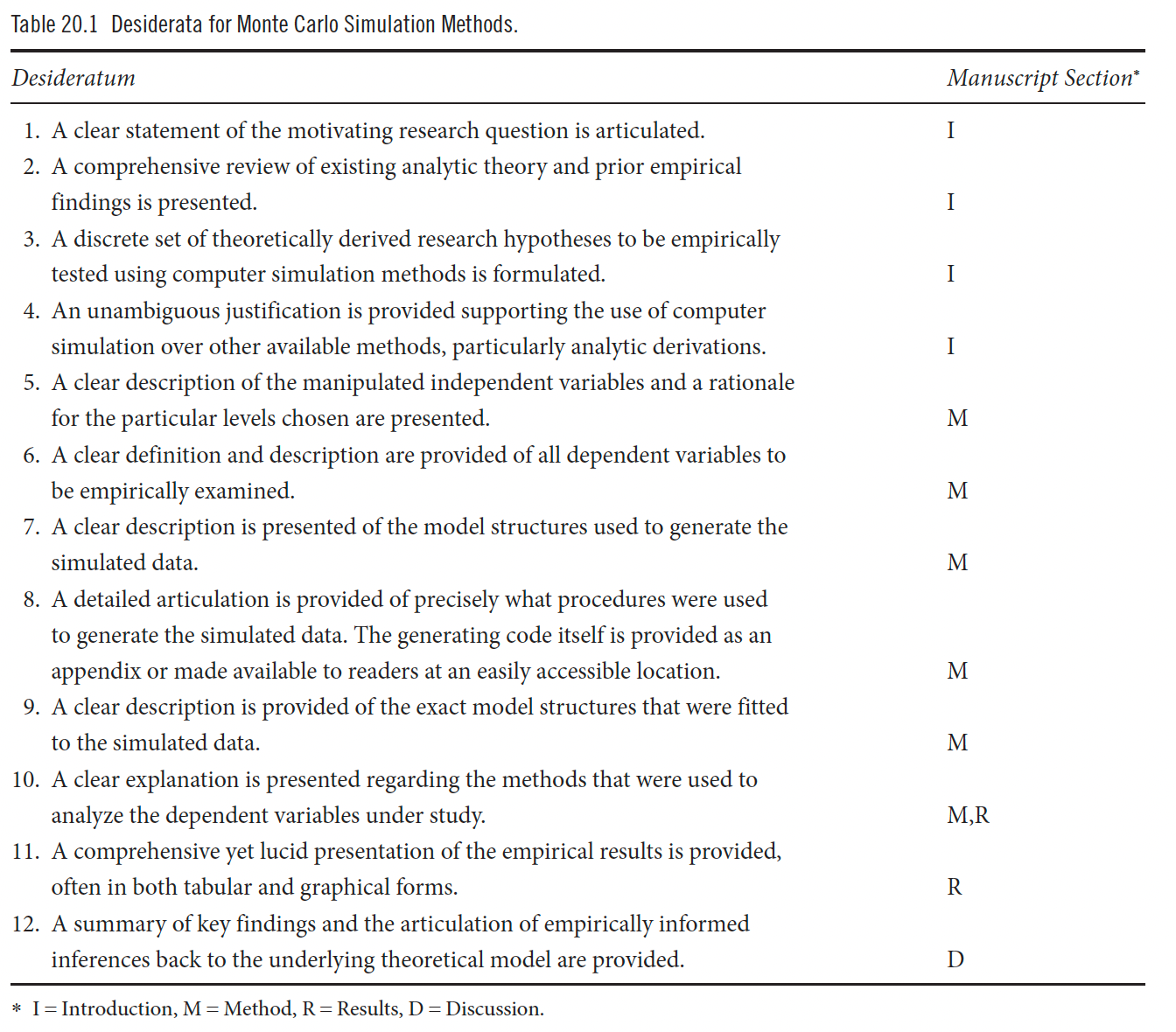6) Outlook: What’s next?
Data Simulation with Monte Carlo Methods
University of Hohenheim
Outlook: What’s next?
Traktandenliste
Introduction & overview
Monte Carlo Simulation?
Proof by simulation — the Central Limit Theorem (CLT)
Errors and power — torturing the t-test
Misclassification and bias — Messages mismeasured
Outlook: What’s next?
Outlook: What’s next?
Getting started with your own Monte Carlo simulation
… for (self-) teaching
… for a priori power calculation
… for your next methods study
Resources: For simulation experiments
{SimDesign}: “Structure for Organizing Monte Carlo Simulation Designs”
Covers the whole simulation and analysis workflow
Extensive documentation

- Alternative: {paramtest}: Some similar capacities, less specialized.
Resources: For simulating data
{simstudy}: Very flexible package for simulating data sets.
{faux}: Simulate data for factorial designs.
{simsem}: Simulate data from structural equation model specifications or objects.
Resources: Simulation for a priori power calculation
DeclareDesign: “is a system for describing research designs in code and simulating them in order to understand their properties” — not ony power simulation, but also diagnosis of bias.
{Superpower}: Calculate power for factorial designs, focus on ANOVA.
Workshop by Niklas Johannes: Intro to power calculations using simulation.
Resources: Teaching with simulations
A general framework by the author of {SimDesign}: Sigal, M. J., & Chalmers, R. P. (2016). Play It Again: Teaching Statistics With Monte Carlo Simulation. Journal of Statistics Education, 24(3), 136–156. https://doi.org/10.1080/10691898.2016.1246953
Special section Using Simulation to Convey Statistical Concepts in Advances in Methods and Practices in Psychological Science
Resources: Faster simulation using parallel computing in R
The Futureverse and, in particular, {furrr}: Simple way to parallelize any code written with {purrr}. Just replace
mapwithfuture_map.datacolada blogpost on how to speed up simulations using parallel computing and convenient cloud computing services.
Resources: Reporting simulation studies
McNeish, D., Lane, S., & Curran, P. (2018). Monte Carlo Simulation Methods. In G. R. Hancock, L. M. Stapleton, & R. O. Mueller (Eds.), The Reviewer’s Guide to Quantitative Methods in the Social Sciences (2nd ed.). Routledge.
